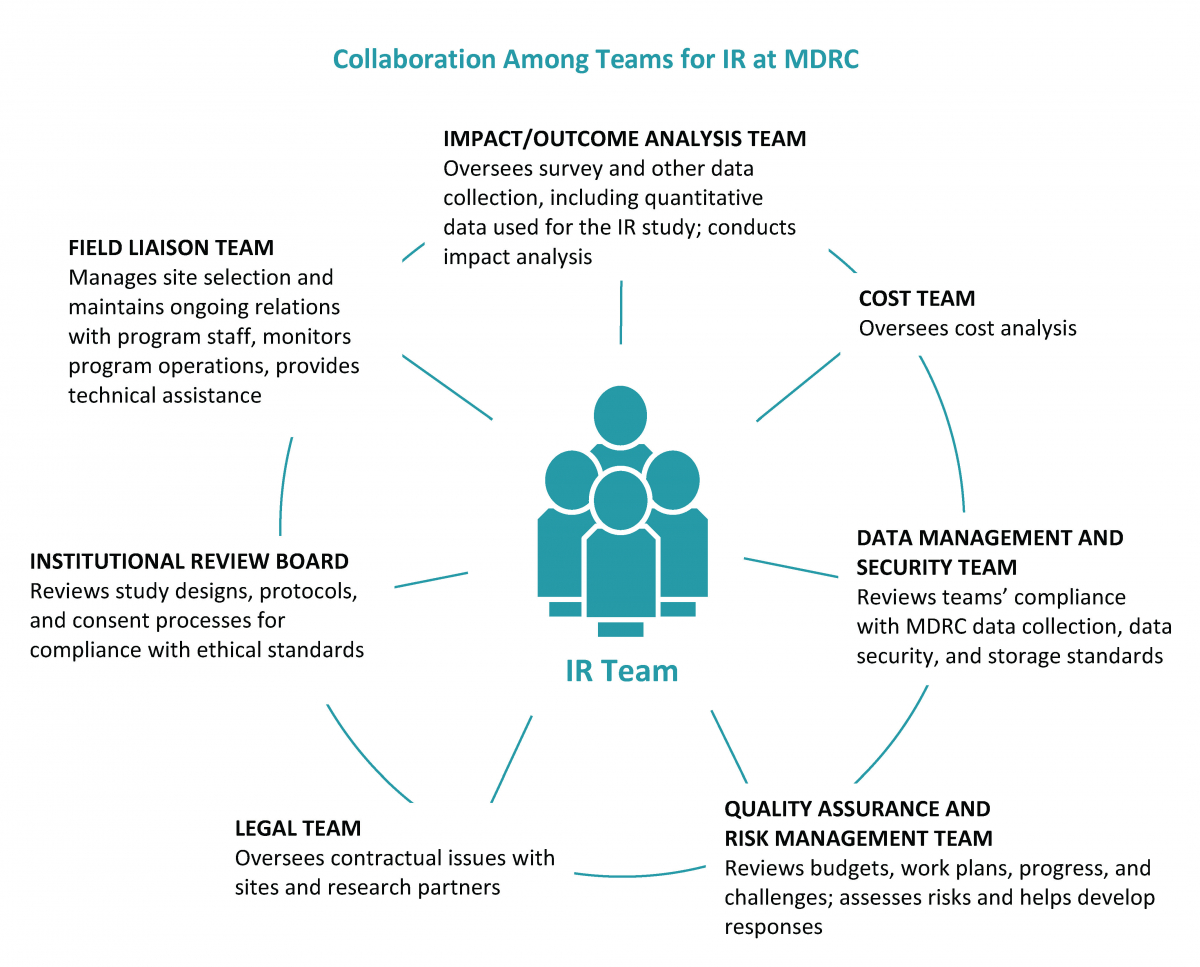Teamwork: Part One of the Nuts and Bolts of Implementation Research

MDRC’s implementation research (IR) is a team effort. IR takes careful planning and coordination among internal team members, no matter whether the project is short term or long term, small or large in scope, informing early program development or assessing an established intervention’s fidelity to its model, standing on its own or embedded in a larger study. It’s a multidisciplinary exercise that draws on diverse staff expertise and a range of information.
At MDRC, an IR team typically comprises a lead researcher (“IR lead”) and a group of associates, analysts, and research assistants that varies in size according to the project scope and budget. The IR lead oversees design, instrument development, data collection, and collaboration with other teams within MDRC as well as external partners. Other team members may be responsible for or involved in specific tasks, such as ensuring data security guidelines are met, preparing Institutional Review Board (IRB) materials, collecting data, or managing qualitative data analysis software.
IR teams also work closely with others across MDRC, as illustrated below.

The IR team, impact/outcomes team, cost team, and field liaisons are all involved in data collection — both quantitative and qualitative — in many cases in a coordinated effort to ensure that we are collecting the right data to learn why program interventions did or did not reach their goals.
Field liaisons and IR staff members typically visit programs to conduct assessments, observations, and interviews. By sharing their experiences and perspectives when they return from the field, they help the whole team develop a nuanced picture of how programs operate on the ground and how things like local political environments or staffing shape service delivery. We often conduct analysis in stages, with teams collaborating to understand emerging stories about implementation and to help identify areas where additional data collection may be needed.
On a foundational level, the IRB, the legal department, the quality assurance and risk management team, and the data management and security team all play core roles in ensuring high-quality IR studies.
At multiple points in a study, the IR team shares the findings with internal and external reviewers who may aid in their interpretation, as well as with staff members of the program being studied. In a formative evaluation, interim findings will inform the program’s improvement efforts. Another post about the processes and procedures of IR — the nuts and bolts — will present a typical project cycle.
Suggested citation for this post:
Gaubert, Jennifer Miller. 2018. “Teamwork: Part One of the Nuts and Bolts of Implementation Research.” Implementation Research Incubator (blog), September. https://www.mdrc.org/publication/teamwork-part-one-nuts-and-bolts-implementation-research.





